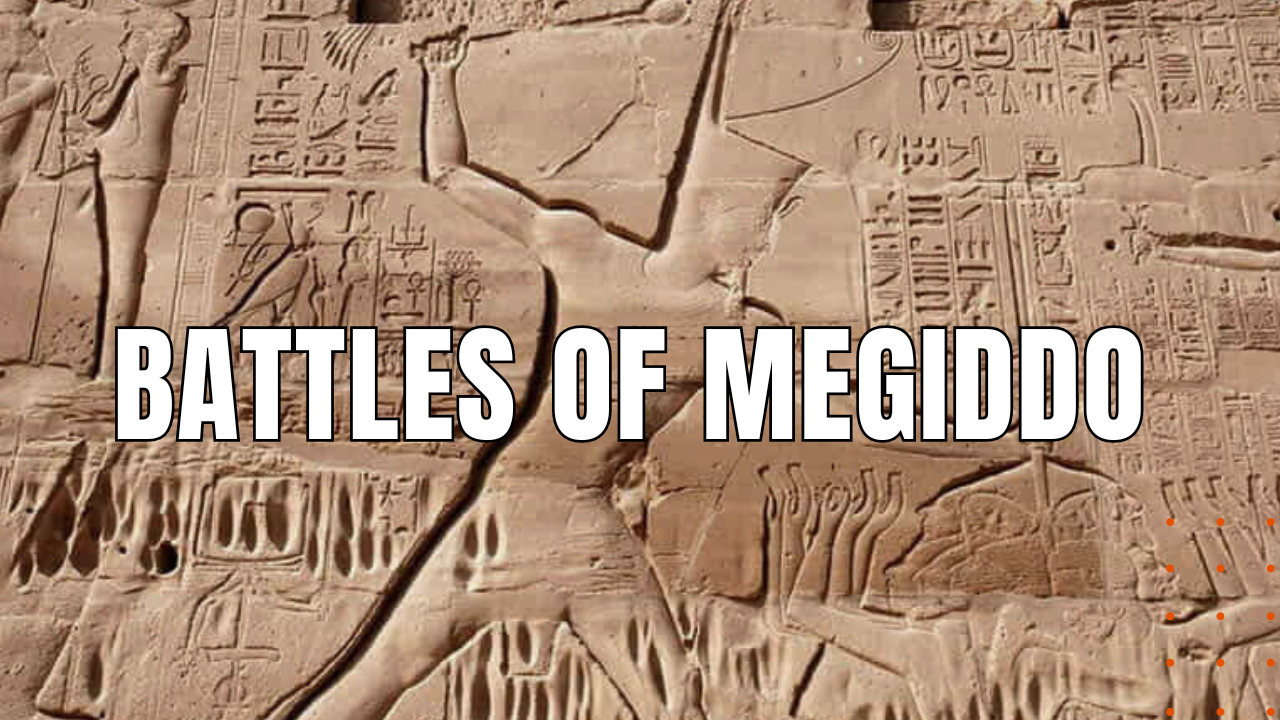The Battles of Megiddo

The Battle that Pharaoh Thutmose III fought at Megiddo in 1457 B.C. against local rebellious Canaanite chiefs, was the first battle that historians could point to with any sense of accuracy, thanks to the fact that Thutmose had the details etched onto stone at Amun-Re’s temple at Karnak. Later known in the bible as Armageddon, the inscribed account of the battle indicates that Thutmose and his men marched from Egypt for ten days’ time, as far north as Yehem, where he stopped to hold a war council to decide his best approach to the fortified city of Megiddo, which was surrounded at the time by the temporary encampments of the rebellious Canaanite rulers.
Three Routes to Victory
Of the three routes to Megiddo from Yehem, a northern route emerged in the Jezreel Valley near Yokneam in current-day Israel, a southern route opened into the Jezreel Valley near Ta’anach, while the central and most direct route ended at Megiddo after passing through a dangerous choke point known as the Musmus Pass that made an invading army susceptible to a high ground ambush. While his generals advised the northern or southern routes for safety reasons, Thutmose felt that such tactics were exactly what the Canaanites would be preparing for. Instead, Thutmose opted for a twelve-hour direct march along the central route, proving to be the correct choice when all his men made it through the pass without encountering a single casualty. The only error Thutmose made was to allow his men to loot and plunder the enemy camps, which gave defenders at Megiddo—mainly old men, women and children—time to close the city gates. As a result, a prolonged seven-month siege of Megiddo was to follow, before the Egyptians could capture the city.
3400 Years Later
Flash forward some 3,400 years to the First World War and the Second Battle of Megiddo, when General Edmund Allenby used the same tactics as Thutmose III. Years before the outbreak of war, Allenby had read about Thutmose’s decisional tactics at Megiddo in an English translation of the Pharaoh’s account written by James Breasted. During the war, subsequently, in September of 1918, Allenby decided to replicate history by pushing into Megiddo through the central approach to the city. His decision resulted in a victory at the Second Battle of Megiddo, taking hundreds of German and Turkish soldiers as prisoners of war without a single Allied casualty, save for a few of his horses. Writer and philosopher George Santayana once stated that those who fail to study history are doomed to repeat it, however, in the case of the Second Battle of Megiddo, Allenby proved that the opposite could also be true.
